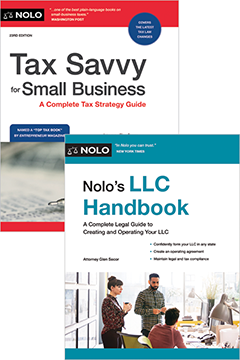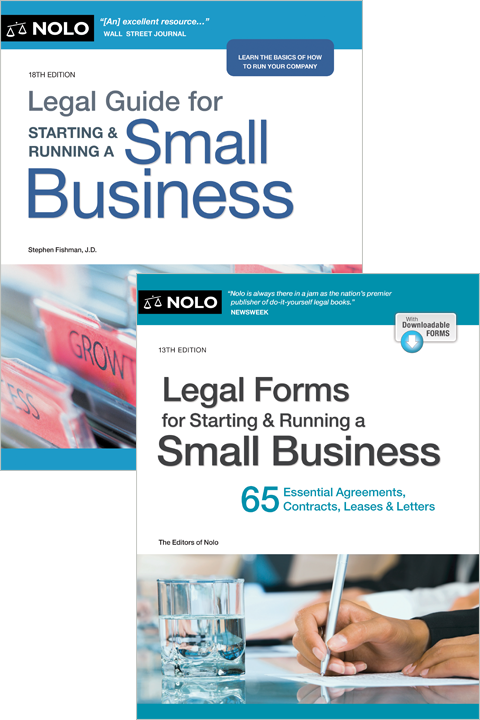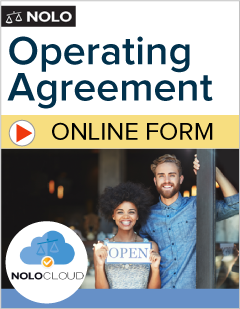Before you start a home-based food business in California, learn about cottage food laws, permit requirements, and other legal issues.
If you have a talent or just a passion for the culinary arts, starting a food business out of your California home can be the perfect fit. You can make the food in your home kitchen and then deliver it to customers, sell it at another venue, or even serve it at your place.
When you make your business plan, think about what type of home-based food business feels right for you. Next, figure out what licenses and certifications you'll need. And don't forget to plan for safety and health—it'll keep your business running strong.
- Cottage Food Operation vs. Microenterprise Home Kitchen Operation
- What Food Can You Sell From Your Home in California?
- How to Get a Permit to Sell Food From Home in California
- Food Health and Safety Requirements for California Home Kitchens
- Selling Your Cottage Food Online
- General Requirements for Starting a Home Business
- Next Steps for Your Home Food Business
Cottage Food Operation vs. Microenterprise Home Kitchen Operation
The very first question you'll need to ask yourself is what type of food business you want to start. California offers two options for home kitchens.
What Is a Cottage Food Operation (CFO)?
Cottage food operations (CFOs) are designed for people who want to prepare low-risk food in their home to sell to customers at places like farmers' markets or food stands. You can also sell prepared food to third-party vendors like restaurants, grocery stores, bakeries, and coffee shops.
CFOs sell cottage food products. "Cottage food" is nonpotentially hazardous food that doesn't need refrigeration or other temperature controls to limit the growth of harmful bacteria or toxic microorganisms. (Cal. Health & Safety Code § 113758 (2025).)
California breaks up CFOs into two categories:
- Class A: You sell cottage food directly to customers from your private home, at farmers' markets, and at temporary events like bake sales. Class A is defined by direct sales.
- Class B: An expansion of Class A, you can sell cottage food directly and indirectly to consumers. In addition to direct sales to customers, you can sell cottage food to third-party retailers like grocery stores, restaurants, food trucks, and cafes. Class B is defined by direct and indirect sales.
(Cal. Health & Safety Code § 114365 (2025).)
Where Can You Operate Your CFO?
Though you apply for these permits through your county, you can operate your CFO throughout the state. (Cal. Health & Safety Code § 114365 (2025).)
How Many Sales Can Your CFO Make?
California caps your annual gross revenue to a certain dollar amount based on your permit class. These base limits are adjusted annually for inflation:
- Class A permits have an annual base limit of $75,000. In 2025, the gross annual revenue limit is $86,206.
- Class B permits have an annual base limit of $150,000. In 2025, the gross annual revenue limit is $172,411.
(Cal. Health & Safety Code § 113758 (2025).)
Class A and Class B CFOs share many of the same rules, such as food preparation standards and training and certification requirements. But they differ in several ways, including in sales limits (as seen above) and permit requirements.
What Is a Microenterprise Home Kitchen Operation (MEHKO)?
Microenterprise home kitchen operations (MEHKOs) are larger enterprises that are similar to small restaurants. With an MEHKO, you prepare hot meals to serve the same day through take-out, delivery, or dine-in. The rules and requirements for an MEHKO are generally stricter than for a CFO, but you're allowed to sell a wider variety of foods.
You can only sell directly to consumers. You can't sell to third-party retailers or wholesalers.
California signed Assembly Bill 626 into law in 2018, which created these types of retail food establishments. (CFOs have existed in California since 2012.)
Where Can You Operate Your MEHKO?
Counties must opt in to the MEHKO program. When you receive a permit from your local county to operate a MEHKO, that permit applies only to your county. In other words, you can operate only in the county where you have a permit. (Cal. Health & Safety Code § 114367 (2025).)
How Many Sales Can Your MEHKO Make?
California caps your MEHKO's base annual gross revenue at $100,000. Again, this base limit is adjusted annually for inflation. In 2025, the gross annual revenue limit is $107,121.
California also limits the number of meals you can prepare as an MEHKO. You can prepare and serve up to 30 meals per day or 90 meals per week.
(Cal. Health & Safety Code § 113825 (2025).)
What Food Can You Sell From Your Home in California?
As touched on previously, the kinds of food you can sell depend on your kitchen operation. Broadly, CFOs can sell only nonpotentially hazardous foods. MEHKOs can sell potentially hazardous foods under a set of strict conditions.
California Cottage Food Operators: Approved Foods
In California, you can register your home kitchen to make the following food products for sale:
- baked goods without custard, cream, or meat fillings (including breads, biscuits, churros, cookies, pastries, and tortillas)
- dry baking mixes
- candy, such as toffee or nut brittle
- dried fruit
- chocolate-covered nonperishable foods, such as nuts and dried fruit
- fruit pies, fruit empanadas, and fruit tamales
- granola, cereals, and trail mixes
- herb blends and dried mole paste
- honey and sweet sorghum syrup
- jams, jellies, preserves, and fruit butter that comply with the standard described in Part 150 of Title 21 of the Code of Federal Regulations
- nut mixes and nut butters
- dried pasta
- popcorn
- vinegar and mustard
- roasted coffee and dried tea, and
- waffle cones and pizzelles.
(Cal. Health & Safety Code § 114365.5 (2025).)
The California Department of Public Health (CDPH) can add or remove items from the approved food products list. Check the CDPH's cottage food operations webpage for a complete, current list of approved products.
Microenterprise Home Kitchen Operations: Approved Foods
MEHKOs operate as mini restaurants and can serve many of the items you'd find on a restaurant menu, including:
- main dishes
- appetizers
- side dishes
- beverages
- baked goods, and
- desserts.
The food must be prepared, cooked, and served on the same day.
MEHKOs can't, however, sell raw oysters or raw milk or milk products.
(Cal. Health & Safety Code § 113825 (2025).)
How to Get a Permit to Sell Food From Home in California
You must have some sort of permit or registration to sell food from home in California. You'll also need to comply with certain training and certification requirements depending on your type of business. Finally, the state might need to inspect your kitchen from time to time.
Permit Requirements for CFOs and MEHKOs
Regardless of your type of home kitchen, you'll need to obtain the appropriate authorization from your local government.
CFO Class A permit: You must register with your local enforcement agency's Environmental Health Department. You'll need to complete and submit a self-certification checklist.
CFO Class B permit: You must apply for a Class B permit with your local enforcement agency. You'll need to pass an initial inspection of your home kitchen before you can get your permit.
(Cal. Health & Safety Code § 114365.5 (2025).)
MEHKO permit: You must apply for a MEHKO permit with your local enforcement agency. You'll need to pass a comprehensive initial inspection of your home kitchen before you can get your permit. (Cal. Health & Safety Code § 114367.2 (2025).)
Permit fees vary across counties. But you can typically expect to pay a couple of hundred dollars for a Class A permit or a few hundred dollars for a Class B permit. If your county allows MEHKOs, these permits usually have the steepest fees, often ranging from $400 to $700.
Training and Certification for CFOs and MEHKOs
All CFOs must complete a CDPH-approved food process course within three months of becoming registered. Any employee or household member who prepares or packages food must also complete the course program. In addition to this initial requirement, you'll need to complete the course every three years. (Cal. Health & Safety Code § 114365.2 (2025).)
MEHKOs have stricter training and certification requirements. MEHKOs must pass an ANSI-accredited food safety certification examination. The certification is good for five years, so you'll need to take the exam again every five years.
In addition, any person who prepares, stores, or serves food in an MEHKO must obtain a food handler card within 30 days of hire. To get a food handler card, you must pass an ANSI-accredited food handler card class. The card is good for three years. So you'll need to retake the course and pass the test every three years. (Cal. Health & Safety Code § 114367.1 (2025).)
Inspection Requirements for CFOs and MEHKOs
Class A permit: California doesn't require initial or annual inspections for Class A CFOs.
Class B permit: Class B CFOs must undergo an initial inspection and annual inspections. The local enforcement agency can only do one inspection of the Class B CFO per year.
Local enforcement agencies can inspect a Class A or B CFO if there's been a customer complaint. (Cal. Health & Safety Code § 114365 (2025).)
MEHKO: An MEHKO is subject to stricter inspection rules. In addition to the initial inspection, an enforcement agency can conduct a routine, investigation, or emergency inspection of the MEHKO under certain circumstances. (Cal. Health & Safety Code § 114367.3 (2025).)
Food Health and Safety Requirements for California Home Kitchens
You must meet certain health and sanitation requirements in your home kitchen.
General Safety Requirements
All CFOs and MEHKOs must comply with applicable general safety requirements, including the following:
- Anyone with a contagious illness can't work in the food prep area.
- The kitchen must use potable drinking water.
- A sink with hand soap and warm water must be available for handwashing.
- Employees and food handlers must properly wash their hands.
- No kids (infants and small children) or pets are allowed in the food preparation area. (MEHKOs explicitly prohibit unnecessary persons from being in the kitchen, which presumably includes infants and small children.)
- All contact surfaces must be washed, rinsed, and sanitized before each use.
- The food prep area must be free of rodents and insects.
- No smoking during food preparation or processing.
(Cal. Health & Safety Code §§ 114365 and following (2025).)
In addition, you can't perform any domestic activities like laundry or kitchen cleaning during food preparation in a CFO.
MEHKOs have additional requirements. For example, MEHKOs must prepare and store foods at specific temperatures, adequately wash produce, and separate raw food from ready-to-eat food. Importantly, as mentioned earlier, food must be prepared, cooked, and served on the same day.
Food Labeling for Home Kitchens
CFOs and MEHKOs must follow the U.S. Food, Drug, and Cosmetic Act for labeling requirements. In particular, you should make sure you list any potential allergens on your labels.
In addition, CFOs must also comply with the additional labeling requirements:
- The words "Made in a Home Kitchen" or "Repackaged in a Home Kitchen" with a description of any purchased whole ready-to-eat products not used as ingredients in 12-point type on the cottage food product's primary display panel.
- The name commonly used for the food product or an adequately descriptive name.
- The name of the CFO that produced the food product.
- The registration or permit number of the Class A or Class B CFO, respectively, which produced the cottage food product and, in the case of a Class B CFO, the name of the county of the local enforcement agency that issued the permit number.
- The ingredients of the cottage food product, in descending order of predominance by weight, if the product contains two or more ingredients.
(Cal. Health & Safety Code § 114365.2 (2025).)
Selling Your Cottage Food Online
More and more customers are embracing and even preferring online orders and home delivery options. In California, you can sell food online from your home kitchen. Consider creating a business plan that incorporates online ordering.
Both Class A and Class B CFOs can sell their products online throughout California. You can take orders through your website, email, phone, or app. You can fulfill online orders via:
- in-person pickup at your home or a designated location
- mail delivery by USPS, UPS, FedEx, or other carriers, and
- third-party delivery services such as DoorDash, Uber Eats, and similar platforms.
(Cal. Health & Safety Code § 113758 (2025).)
MEHKOs must prepare, cook, and serve food on the same day. Practically, it'll likely make the most sense for customers to order food online through your website or over the phone. Customers can then pick up their food at your residence, or you can deliver it to their location. You can also become a merchant with a third-party delivery service.
MEHKOs that sell food online must clearly and conspicuously post on their website or mobile app a way for customers to file a food safety or hygiene complaint. You must also include a link to the CDPH website that contains information on how to file a complaint with the enforcement agency. (Cal. Health & Safety Code § 114367.6 (2025).)
All labeling requirements still apply to products sold online. Make sure your product listings and labels clearly display all required information.
General Requirements for Starting a Home Business
Apart from the requirements specific to home kitchens, you'll need to make sure you're setting your home business up for success. You'll need to pick the best business structure, shop insurance policies, and follow housing and zoning rules.
Pick the Best Business Structure
When you start a business, one of the first tasks to complete is choosing a business structure. The main entity structures include:
- sole proprietorships (if you alone own the business)
- partnerships (if you and others own the business)
- limited liability companies (LLCs), and
- corporations.
Each structure has its benefits and drawbacks. For example, you must legally register an LLC or corporation, but these structures protect your personal assets from business debt. On the other hand, sole proprietorships and partnerships require no state filings, but they also offer no liability protection.
Home Business Zoning Laws for CFOs and MEHKOs
Typically, you need to make sure that your home business is in line with local zoning ordinances. California specifically addresses zoning issues for home kitchens in its laws.
California specifically forbids a city or county from prohibiting a CFO or MEHKO from operating in a residential dwelling.
Instead, for a CFO, a city or county must either:
- classify a CFO as a permitted use for residential property
- grant a nondiscretionary permit to a CFO to operate in a residential dwelling, or
- require a CFO to apply for a use permit to use a residence for its operations.
(Cal. Gov't Code § 51035 (2025).)
California provides an even more favorable route to residential operations for MEHKOs. The state forbids a city or county from:
- requiring a permit or rezoning of a property
- charging a fee, or
- imposing any other restriction on an MEHKO to operate in a residential dwelling.
(Cal. Health & Safety Code § 114367 (2025).)
While the state has made a clear path for home kitchens to operate in residential dwellings, you should still check any HOA rules or other regulations that might apply to your residence.
California Home Food Business Insurance
Food businesses face unique risks. For instance, customers could get sick or find plastic or glass in their food. You'll also want to stay protected against hazards like fires, theft, and property damage. Don't assume that your homeowners' or renters' insurance policy will cover your home business operations; it probably won't.
You'll want to consider a few insurance options:
- General liability insurance: A general liability insurance policy covers bodily injuries or property damage that occur during business operations, such as a customer slipping and falling at your home.
- Product liability insurance: This type of policy covers claims if your food causes illness or injury to a customer. Because food businesses face risks from foodborne illness, allergen exposure, and contamination, product liability coverage can be essential.
- Business property insurance: Property insurance protects your equipment, ingredients, and finished products.
You can talk to a qualified insurance agent to figure out the best insurance plan for your business. Some companies create comprehensive insurance policies tailored to a specific kind of business. To find a good insurance agent, ask other food-business owners for recommendations. Look for an agent who has experience writing policies for food businesses and make sure all major risks are covered.
If you use a car or truck for deliveries or other business travel, be sure your vehicles are properly insured.
Employment Considerations
In California, other members of your household or your immediate family can help you with your cottage food business. Beyond that, the law allows you to hire only one full-time employee. (Cal. Health & Safety Code §§ 113758 and 113825 (2025).)
If you decide to hire an employee, you should learn about basic employment law issues such as:
- federal and state hiring rules
- employee rights in California
- California wage and hour laws
- discrimination laws in California, and
- workers' compensation.
For more information on employer responsibilities, check out our human resource articles.
Next Steps for Your Home Food Business
The laws surrounding home-based food businesses continue to evolve, especially at the county level. You should look at the most current regulations before you sell products to the public. Often, the best source of information will be your city or county licensing offices.
If you want to become a CFO, check out California's business quick start guide for CFOs. This comprehensive guide combines all the relevant resources and issues in one place.
As your business grows, you might decide to open a traditional restaurant, which is more regulated. Be sure to research the licensing and permitting requirements for restaurants before you move forward.
Protect Your Business
Create your LLC with Nolo
- Cottage Food Operation vs. Microenterprise Home Kitchen Operation
- What Food Can You Sell From Your Home in California?
- How to Get a Permit to Sell Food From Home in California
- Food Health and Safety Requirements for California Home Kitchens
- Selling Your Cottage Food Online
- General Requirements for Starting a Home Business
- Next Steps for Your Home Food Business




